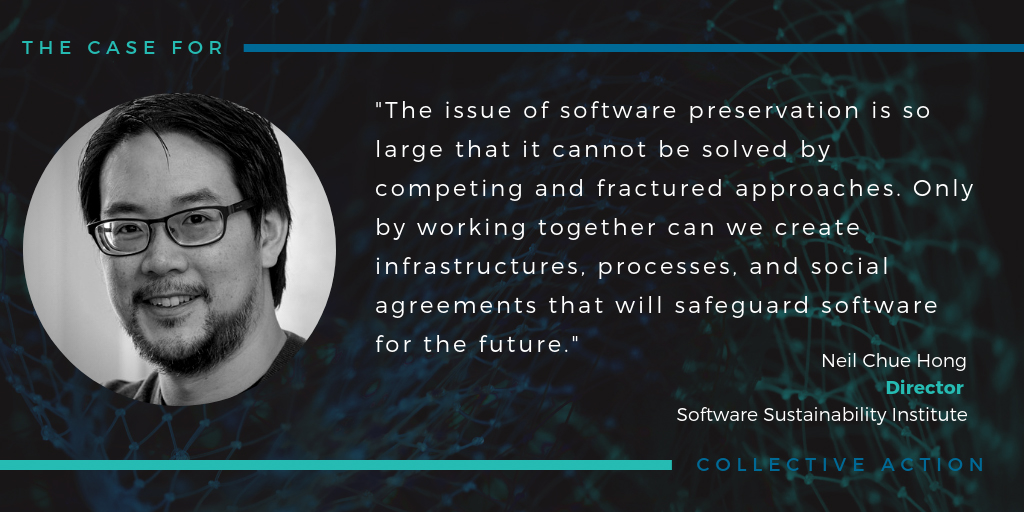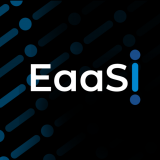
December 17, 2018
Grassroots Formation
By Jessica MeyersonEvolving from a volunteer network to a funded community
In 2014, my colleague Zach Vowell and I proposed a consortial model for long-term access to software and software-dependent data – we called it the “Software Preservation Network” (SPN). A year later, our institutions, California Polytechnic State University and the University of Texas at Austin, were awarded an Institute of Museum and Library Services National Forum Grant to “build the foundation of an organization that can preserve the means to experience our digital heritage.”
At that moment, the Software Preservation Network came into existence, though our journey to cultivate a healthy and sustainable community of practice had just begun.
After nearly five years of growth and evolution, SPN is shifting from a soft-funded, project-based initiative to a self-sustaining community. This shift represents a monumental milestone in the trajectory of the Network. Below, we chronicle that trajectory so that other community-focused organizations can understand and learn from our experience.
Getting off the ground
In SPN’s first year, under the IMLS National Forum Grant, Zach and I conducted a study entitled “Software Preservation for Cultural Heritage.” The goal of the study was to identify a gap where cultural heritage professionals were not being represented in the historical data on software preservation, and where software was not addressed in the digital preservation ecosystem. Our findings strongly supported the need for software preservation within cultural stewardship organizations and allowed us to connect with colleagues actively working in this area.

With a need documented and a collection of software preservation professionals identified, Zach and I turned our attention to planning a national Software Preservation Network forum to solicit community input and build consensus around future steps. In April 2016 our paths crossed with Katherine Skinner, Educopia Institute Executive Director and experienced community cultivator. As we filled her in our plans for SPN and the forum, Katherine provided crucial support and feedback based on her many years of experience working with digital preservation communities.
The 2016 SPN Forum – “Action Research: Empowering the Cultural Heritage Community and Mapping Out Next Steps for Software Preservation” – provided an opportunity to engage with speakers’ distillations of major software challenges, and to do the difficult work of workshopping actionable next steps for overcoming these challenges. This work resulted in a six-year community roadmap organized by areas of focus (which were later represented by working groups described below). Thanks to the hard work of Brandon Butler, Susan Malsbury, Tim Walsh, and Karl-Rainer Blumenthal we were able to summarize and publish the Forum conversations.

In the weeks following the Forum, the SPN “team” expanded to include Forum attendees and others willing to commit their time and expertise to the software preservation tasks identified in the community roadmap. The initial SPN team formed working groups for each category of the roadmap and invited any of the new volunteers to act as working group coordinators. By mid-November 2016, each of the following working groups had a designated coordinator:
- Communications, Outreach, Advocacy: Aliza Levanthal, Librarian/Archivist, Sasaki Associates
- Curation Readiness: Fernando Rios, CLIR Postdoctoral Fellow, Johns Hopkins University
- Documentation: Tim Walsh, Digital Archivist, Canadian Centre for Architecture
- Governance: Jessica Meyerson, Digital Archivist, University of Texas at Austin and Zach Vowell, Digital Archivist, Cal Poly State University
- Metadata: Elizabeth Russey Roke, Digital Archivist, Emory University
- Research: Wendy Hagenmaier, Digital Collections Archivist, Georgia Institute of Technology
- Technical Infrastructure: Steve Marks, Digital Preservation Librarian, University of Toronto
Formalizing the Network
With our community roadmap, volunteers, and working groups in place, the SPN team recognized a need to “step back” and think through the organizational modeling process. We wondered, “how does one foster a healthy community?” “How can we articulate an ethos that will bind our major players together?” And from that point, “how we do continue to grow our community in a healthy and sustainable manner?”
These questions, in all of their enormity, led us back to Educopia.
Guided by Educopia’s many years of experience in community cultivation, SPN’s Governance group created mission, vision, and value statements, and drafted a Prospectus that serves as the foundational document on the road to organizational formality and sustainability. Throughout this process, Educopia served as a center of gravity for SPN – helping us ask the right questions, organize our work, set goals, and monitor our progress toward those goals.


Since 2016, SPN has expanded its organizational structure to include affiliated projects such as The Code of Best Practices for Fair Use in Software Preservation, Scaling Emulation as a Service Infrastructure (EaaSI) and Fostering a Community of Practice (FCoP), and our working groups have successfully accomplished many of the goals originally outlined in the community roadmap. Given this progress, at the close of 2017/beginning of 2018, the members of the Network organized a series of all-hands meetings to evaluate working group alignment and to look ahead at goals for the Network’s growth. One key outcome of the all-hands strategy meetings was a renewed focus on securing sustainable sources of funding for SPN.
The Future of SPN

Now able to substantiate our requests for community support with two years of concrete accomplishments as a volunteer network, we updated the SPN Prospectus and published a two-year plan (2019-2020) to shift SPN from a soft-funded, project-based initiative to a sustainable membership community. The resulting Prospectus is now available and already garnering steady support from an expanding network of sponsors and members.
During the two-year start up period, Educopia will continue to guide the community through capacity-building activities in five core areas: Vision, Infrastructure, Finances and HR, Engagement, and Governance. Together, we’ll establish a communications strategy, build administrative structures, create a financial plan, organize events, grow the community’s leadership, and more – all in the service of our shared aim to “save software together.”
Note: SPN would not exist without the persistent effort of each and every individual participant, organizational member, and partner. Due to length, this post does not catalog all of the impassioned work that has been completed over the last three years. Please stay tuned for future posts that highlight facets of this work and shine a much-deserved light on the people that make collective action for software preservation possible.
To learn more about SPN’s activities and their plans for the future, download the SPN Prospectus. Keep tabs on recent happenings by subscribing to SPN’s newsletter.
And if you’re curious about Educopia’s approach to the formation and evolution of collaborative communities, Community Cultivation: A Field Guide has a wealth of activities, tools, and hard-won lessons for community organizers and leaders.